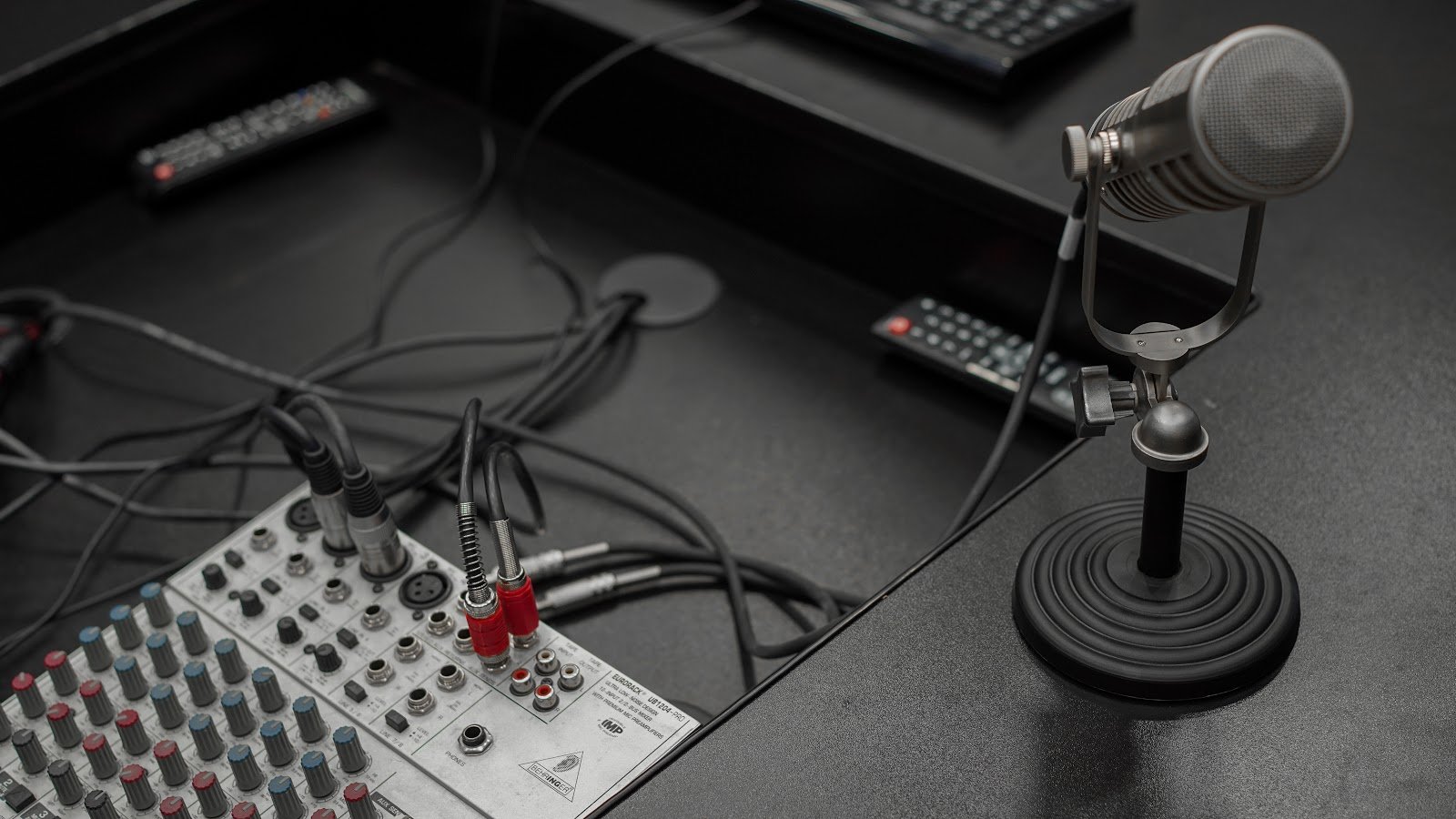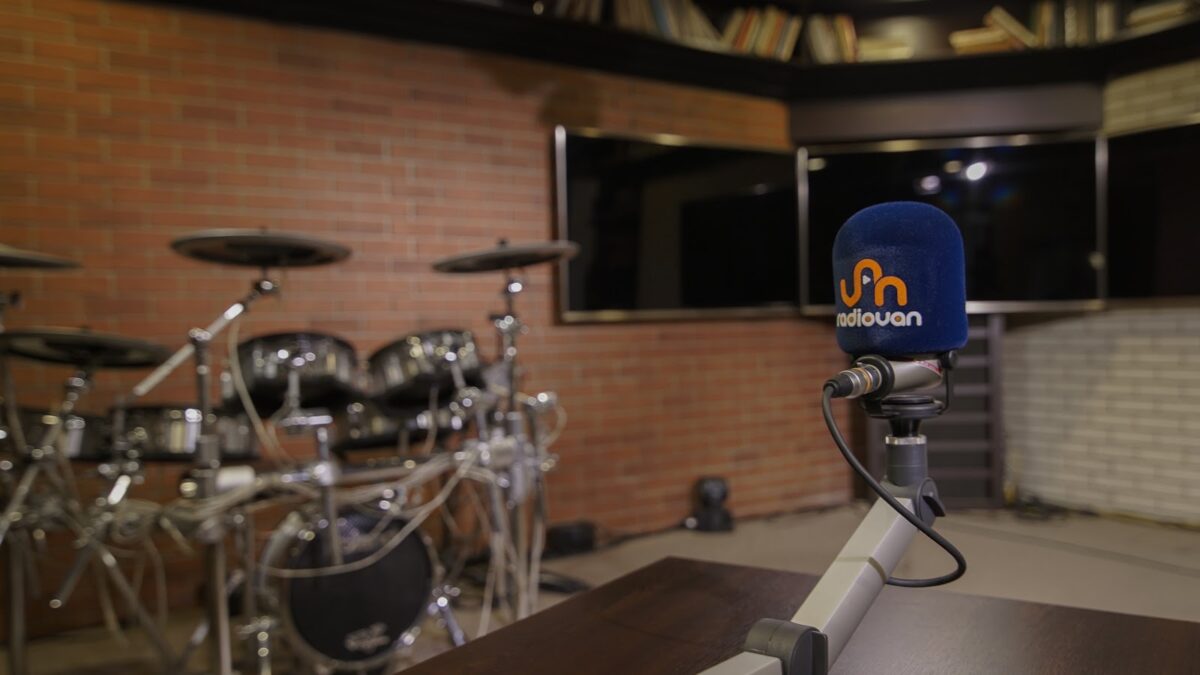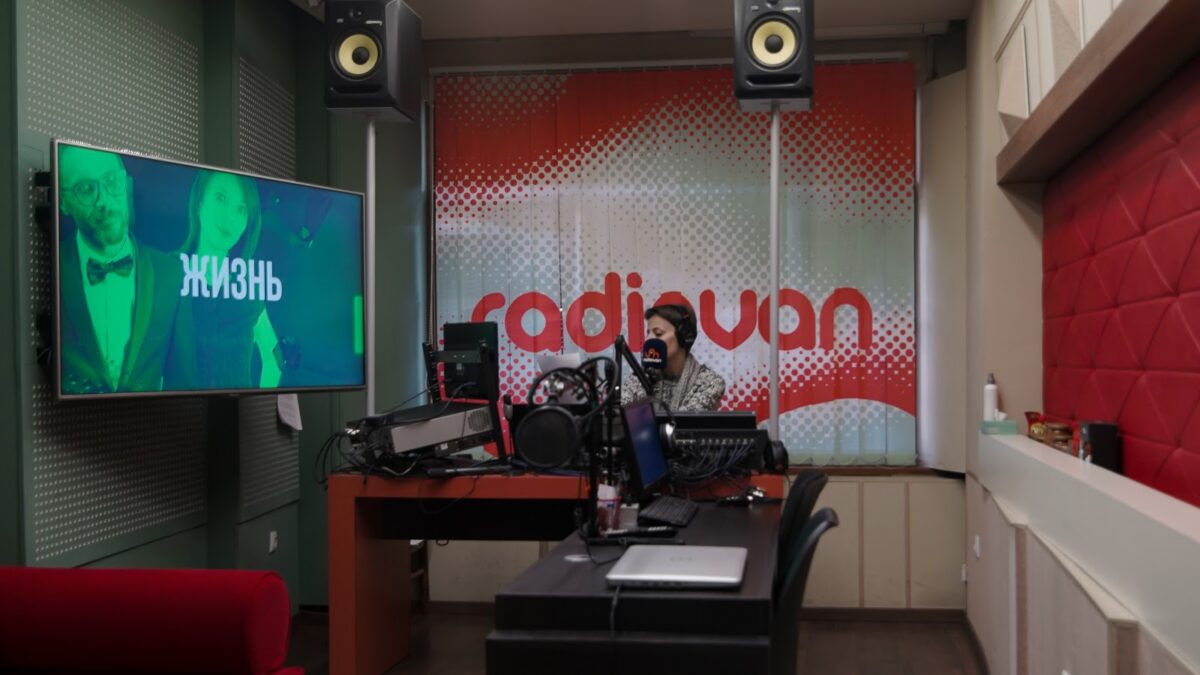
Radio is a field of media that is almost entirely dependent on business activities and advertising. It is no secret that as a result of the “lockdown” announced due to the spread of the coronavirus, many companies were closed or frozen for a short time, and in some cases for a long time, having no chance or opportunity to advertise a product or service.
It turned out that along with playing an important role in the information frontline and providing its listeners with operative news about the epidemic, the radio was facing a major financial crisis, which continues to this day. This is the case all over the world.
To avoid the damage caused by the coronavirus, the American “iHeartMedia” corporation with 850 stations had to reduce costs by $250 million. Radio advertising turnover in Russia in April 2020 decreased by more than 49%, in some regions of the country the decrease reached up to 90%.
However, economic losses are not the only changes brought about by the quarantine period. According to a study conducted at the University of Pompeu Fabra in Barcelona, a significant increase in the number of listeners and listening time has been observed in different parts of the world. In the United States, the number increased by 28%, in India – 23%, in South Africa – 36%, in Italy – 2.8%.
There are currently 24 radio stations in Armenia, 4 of which have republican and 20 city or regional coverage. The local private commercial radio sector, which has been operating for about 27 years, has gone through various stages of development, overcoming the resource barrier of digitalization and maintaining its position as a modern media.
Today, Armenian broadcasters are facing a new challenge: to continue their existence or not?
The first blow: Work style changes
The demand was the same everywhere: maintaining social distance, wearing a mask, a limited number of people gathered in the same place. To these were added the caution and self-censorship due to the state of emergency, as there was a formal restriction on the dissemination of information.
News Radio Deputy Director David Khumaryan says that their radio is a radio station for two talking people, “And when they say that these two people should not meet each other because they can infect each other, it leads to the collapse of the station, in which we have been for a long time.”
Khumaryan says that in the workplace, immediately after going through the stage of mass apathy of the coronavirus, the furniture of the pavilion was changed a little so that people could sit farther apart. The editorial office changed the layout of the computers in an attempt to ensure a distance of one to one and a half meters.
“All this required not large investments, but an anxious background in the editorial office, inconvenience to people,” he said.
The management of “Radio Hay Network” and “FM 105.5 Yerevan” radio stations have imposed restrictions on coming to work since March 2020, providing all the airtime from home. The programs were recorded, the playlists, the programming and the broadcasting work were also remote. The Armenian Network stopped broadcasting guest programs.
The work at “Radio Van” and “Ruskoye Radio” stations has not stopped either. According to Shushanik Arevshatyan, Founding Director of Radio Alfa Holding, they have reduced the number of people going to work․ Those who could work from home, and the hosts ran the broadcasts.
Public Radio host and programmer Lusine Muradyan assessed their station’s response to the new changes as “restrained and balanced,” as they are used to working in force majeure situations, from which many years of work experience helped them to get out. Prior to the quarantine, there were about 60 programs on Public TV, which were published in recorded form. All of them switched to remote mode with home recordings. Among the digital adaptations of the “First,” there were also live concerts, which were replaced by a video with musicians.
Muradyan singled out another feature of working in epidemic conditions – speaking on the air with masks, which was the only difficulty for them, which prevented them from seeing the guest and the guest, their facial expressions.
“But we came out of it with honor, strictly observing all the epidemic rules,” she said.
There was a period in “Radio Marshall” when the airtime was reduced so much that only the news remained. This continued from almost the beginning of quarantine until September. The station had made such a decision to avoid the difficulties of switching to remote broadcasting.

“News Radio”
Content changes
Content change was inevitable, as the coronavirus was a key topic for all media outlets. Special reports were created and recorded about the infection and the epidemic situation.
News Radio started the “After the Epidemic” program, which talked about the expected economic impact in the country, but Khumaryan thinks that “all those thoughts voiced by economists and entrepreneurs did not work because after the epidemic, came a war that completely changed the matrix of the economy.”
According to Hamlet Arakelyan, host of “My Radio” youth channel, their station experienced a boom in the days of the epidemic, because the standard formats, such as the morning program, were suspended and new ones could be thought of, which could be organized remotely.
This is how one of the most successful and well-rated projects of the radio station was born today, “The Very Poetic Ring,” which continued for the second season after the quarantine, this time in the studio. One of the content innovations of “My Radio” was the program “Theater Quarantine,” the idea and main goal of which was to make the everyday life of people who love art and theater interesting. The radio station called a master of stage art and staged a live play.
Radio transformation, time to experiment
Keith Dakin, the programmer of a radio company with 14 stations in the USA, spoke about the creative freedom of radio in such crisis situations. “Now is the time to do experiments. Due to the lack of advertising, we have more free airtime. I put on the songs in one of our music stations, which everyone knows by heart and sings equally with us. We organize ‘fake’ concerts in one of the stations, broadcasting tracks from the live albums of the performers.”
In the Armenian reality, “Radio Van” went in such a direction, where the radio was divided into two parts. One, as Arevshatyan says, is the broadcast that does not bring any money, the other is the products and social media with different mediums. They rent out their live studio to musicians and music groups and are engaged in musical instrumentation.
In many cases, the situation was like starting a radio station from scratch. And it had its positive sides.

“Radio Van”
The positive aspects of the pandemic
“The coronavirus was not so bad, it was another test that the organization had to overcome. Tests harden you, show how strong you are, how well you manage crises, how much you can get out of this or that situation,” said Shushanik Arevshatyan.
Within the framework of off-air projects, “Van” intensively worked on YouTube, TikTok and Instagram.
“We cooperated with the world, exported our services, recorded audiobooks, worked on new, successful and unsuccessful projects, sold them and found sponsors. We used the knowledge of our languages: Russian, Armenian, English, Spanish, Chinese,” said Arevshatyan.
There were new experiments on other radio stations as well. The main tool was video surveillance, which allowed all stations to expand their field of vision and not perceive physical boundaries as an obstacle.
“We also included Armenians in different continents in our programs, making their voices heard as well,” said Public Programmer Lusine Muradyan.
Public Radio uploaded short videos on social media that showed how people in the audio world were working from home, who was disturbing them, and what situations they would find themselves in.
Muradyan remembered a funny episode, how they decided to speak wearing gas masks on one of the programs before masks became mandatory.
“Apart from the difficulties of breathing and speaking with gas masks, we were constantly thinking of how to make sure that the end of the gas mask did not touch the microphone,” the host recalled.
Despite the big cuts in “Radio Marshall,” the alternative here was also video. Tamara Hakobyan, the host and coordinator of the “Generation of Che” program, which is being prepared jointly with the Chair of Journalism at Radio Marshall, says that they talked through the “Zoom” application, then edited and posted it on Facebook. In addition, the station created its own podcasting platform for journalism students.
My Radio thinks that quarantine was a very effective period for their station, emphasizing the fact that they have always recorded the best results during crisis situations.
“Technically, we realized that it is also possible to get normal quality sound from home, by putting socks on the phone to record under the sheets and at home, editing with our own computers and sending the recording. We learned all that and became skilled. “Previously, we did not receive reports through video calls,” said Hamlet Arakelyan.
Advertising, financial crisis
According to a study by the international network PwC, the income of radio advertising worldwide has been decreasing every year since 2015, and radio is losing its importance among the general public.
Advertisements are placed on Armenian radio stations in different ways, either by working with advertising agencies, which also serve the television, both independently and through direct communication with the advertiser, and through sales houses.
The latest version is used by “Radio Hay” and “Radio Alfa” holdings.
“Since 2010-2011, we have been cooperating with Radio Van and Ruskoye Radio stations, selling 30-40% of our advertising time together,” said Andrias Ghukasyan, director of Radio Hay Holding.

“Radio Hay”
Radio Hay has 10 advertisers in the normal months, during the holiday-shopping seasons that number reaches 15, and in April 2020 it had 2-3, reducing by about 70% of the total advertising turnover.
The same situation continued in May and June. Positive changes were observed in July and already in September, compared to September 2019, the advertising turnover was restored by 70-80%. After that, from the start of the war until almost the end of December, all advertisers suspended their programs.
In “Radio Van” the incomes have decreased by 85%, which brings the station to the verge of closing.
Arevshatyan said, “If in March of last year we had a turnover of 10 million AMD in one radio, in April we had 3 million, in May 4 million. Summing up 2020, I can say that “Ruskoye Radio” came out with a profit and “Van” with a deficit. As a result, our holding is at zero, thanks to that we have no debts.”
The loss of advertising turnover in “News Radio” was 80%, the number of advertising clients of the station is currently 6 instead of the previous 15.
“Advertising invests in the future. When a businessman does not see a future in the country, he does not invest. If there is a lockdown in the country, the advertiser’s work and service are closed, who is going to order advertising? The closed enterprise wouldn’t advertise, would it?” said Khumaryan.
Davit Khumaryan compared the turnover of November 2019 with the turnover of November 2020: The difference was 70%. In November 2019, the radio station gave its sales specialists as much bonus as the whole turnover of November 2020. Now “Lratvakan” is approaching 50% of its advertising turnover in 2019.
Radio Hay reports that the advertisers are returning, but not like before, but with a much smaller media plan, half its size.

“Radio Van”
“RadioControl LLC” is an advertising monitoring company for radio stations in Armenia, from which radio stations and advertising agencies take reports to find out how much and what kind of advertising their competitors have.
Tigran Melikyan, the organization’s marketing director, says that during the spread of the coronavirus, they also suffered damage: the number of orders decreased, employees’ working hours were reduced from 6 hours to 3.5 hours.
Ucom, MTS, Beeline were completely absent from major advertisers, and although orders from bookmakers and online casinos also declined, Van had the lowest revenue in April 2020 at 3 million. The radio received money from totalizators, “Vivaro,” “Adjarabet.”
A sharp increase in audience, a sharp decline in financial resources
“News Radio” is the radio station reserved for the Armenian listener’s bad days, because when everything is good in the country, there is no need to listen to the news. And, unfortunately, people start following the news services when there is a problem in the country, so the number of listeners has also increased during this crisis. “Our marketing department is very sad that it is not able to monetize that increase in audience,” said the station’s deputy director.
There is no tool for measuring radio ratings in Armenia.
According to Tigran Hakobyan, Chairman of the Television and Radio Commission, measurements were made by telephone in the past, and today there are radio stations that see the number of listeners on the Internet, which does not present the whole picture.
In the case of TV channels, there are separate organizations that count GRPs, sections (CRR, Efficiency Ratio) and segments. Not so with radio. The lack of tools for measuring radio ratings in Armenia is due to the poor market and expensive technologies. Unlike the TV market, the amount of advertising on the radio is small.
News Radio solved this problem by regularly ordering closed-ended surveys for MPG LLC, the Armenian representative of Gallup International, to find out what gender and age group their listeners belong to, what education they have, and how much their financial income is etc.
“Radio Hay” did not conduct a study to assess the growth of listeners, but it has noticed that tendency for growth since last summer.
Instead of finding out the situation through measurements, “Van” received the “Best Radio of the Year” award from “MPG” company in February 2021, which is based on the results of telephone surveys conducted by the company in August-September 2020.

“Radio Hay”
Employees
The financial backing funds of two of the radio holdings allowed the current, fixed salary expenses to be offset during the crisis months of the epidemic, but they were later exhausted due to the war.
In “Van” that fund was significantly reduced, but we managed to avoid debts.
“Radio Hay,” being the only one of the three holdings which has republican coverage, has accumulated debts of about 4 million AMD.
“Our strategy was the following: not to delay taxes, bank payments and salaries at the expense of other suppliers. Now we have collected all the debts, plus the rents of the towers, which is the most costly factor in this field. We hope that if the situation does not destabilize again by September-October 2021, we will close those debts,” said Andrias Ghukasyan.
The station reduced its staff due to the war in December. “We tried our best not to make the coronavirus a cause for people losing their jobs, affixing all the jobs in order to bring our employees back.”
As a result of the war, 4 programs were also reduced here, and two programs that had been planned were canceled.
“News Radio” discussed ways to find financial solutions in a crisis situation and came to the collective idea that it is better to reduce everyone’s salaries than to reduce some of the partners.
“We have not returned to the previous indicators and we are even going back. We have always worked with fees, we have paid as much as people worked. Now the employees work as much as they can, and we pay as much as we can,” said Khumaryan.
The owners of all three holdings consider not the coronavirus to have been a big blow, but mainly the war, followed by the current political situation in the country.
“We are still in the first stage of our financial and economic crisis, everything will get several times worse in the fall,” predicted the director of “Van” Arevshatyan.

“News Radio”
Government assistance
According to the second point of the decision N 1137-N of the Government of the Republic of Armenia, adopted on July 2, 2020, support in the amount of 78,300,000 AMD was provided to the TV companies broadcasting in the public multiplex of Armenia and the licensed radio companies broadcasting in the FM frequency range.
“We only received 500,000 AMD from the government once, which was neither aid, nor a subsidy, but a very small amount of a pure advertising campaign. “We are talking about the social advertising campaign that we did for about five months, commissioned by the Ministry of Health,” said Arevshatyan.
According to Andrias Ghukasyan, Radio Hay Holding has carried out a large number of campaigns, covering all government and state programs on the coronavirus, for which, apart from news and advertising, it has created a new program block.
“If we count on the sale prices of our radio station, the volume of that advertisement was 5 million AMD, 10 times more than the amount of their support. However, we think that the government has done as much as it could,” said Ghukasyan.
There is a similar problem in neighboring Georgia, for example, Goga Samushia, chairman of the board of Kommersant media platform, believes that it is necessary to introduce tax benefits for the radio industry in their country, exempting audio media from VAT, as was done years ago with print media, as low-income media.
The broadcasters were met by the Russian Ministry of Digital Development, Communication and Mass Communication, which on July 15, 2020, issued an order to reduce license requirements, reduce the strength of transmitters, reduce the volume of broadcasting at night, switch to mono broadcasting and even shut down transmitters for up to three months, which has significantly reduced the cost of communication services.
FM radio has been providing round-the-clock information and entertainment for decades, with voices already familiar to many, and in theory, during the global crisis that forced millions to stay at home, it should have been the ideal platform to make everyday life interesting. It would also become an urgent media outlet about measures to reduce the dangers of the epidemic.
In fact, during the past year, people listened to the radio more often than usual, and radio as a sector was stuck in the swamp of a major crisis, from which it has not yet emerged.
Christian Ginosyan


Add new comment
Comments by Media.am readers become public after moderation. We urge our readers not to leave anonymous comments. It’s always nice to know with whom one is speaking.
We do not publish comments that contain profanities, non-normative lexicon, personal attacks or threats. We do not publish comments that spread hate.